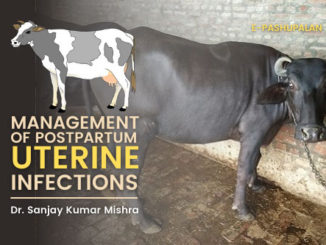Introduction
A vitamin is an organic molecule (or related set of molecules) as well as an essential micronutrient that an organism needs in small quantities for the proper functioning of its metabolism. Essential nutrients cannot be synthesized in the organism, either at all or not in sufficient quantities, and therefore must be obtained through the diet. Vitamins have diverse biochemical functions. Vitamin A acts as a regulator of cell and tissue growth and differentiation. Vitamin D provides a hormone-like function, regulating mineral metabolism for bones and other organs. The B complex vitamins function as enzyme cofactors (coenzymes) or the precursors for them. Vitamins C and E function as antioxidants. Both deficient and excess intake of a vitamin can potentially cause clinically significant illness, although excess intake of water-soluble vitamins is less likely to do so. Infection is the invasion of an organism’s body tissues by disease-causing agents, their multiplication, and the reaction of host tissues to the infectious agents and the toxins they produce. Infectious disease, also known as transmissible disease or communicable disease is illness resulting from an infection.

Effect of Vitamin A on infection
Vitamin A (Vit A) is a group of unsaturated monohydric alcohols that contain an alicyclic ring. Vitamin A is insoluble in water but is fat soluble (Sommer, 2008). In 1928, Green and Mellandy reported that Vit A could enhance the anti-inflammatory response of organisms and called Vit A the “anti-inflammation vitamin” (Mellanby, 1928). Later, the anti-inflammatory capacity of Vit A was widely studied in the 1980s and 1990s. Vit A exists in the form of retinol, retinal, and retinoic acid (RA), among which RA shows the most biological activity. RA exists in two significant derivatives: 9-cis-RA and all-trans- RA (ATRA). The primary biological functions of Vit A include maintenance of vision, growth, and the integrity of epithelial and mucous tissue.
Vitamin A and Its Importance on the Immune System
Immune organs are organs or tissues that realize immune function, and are places where most immunocompetent cells proliferate, differentiate, mature, aggregate, and respond to immunity. Several researches has shown that crucial immune organs need constant dietary intake to maintain Vit A concentrations, and RA was previously shown both to promote the proliferation and to regulate the apoptosis of thymocytes. In the thymus, endogenous retinoid synthesis and retinoids similar to glucocorticoids might, indeed, be involved in the regulation of thymic proliferation and selection processes, by being present in the thymus in functionally effective amounts (Kiss et al.,2008).
In mice, Vit A and D leads to a defect in both T cell mediated and antibody-dependent immune responses (Bennekum, 1991). Infection is often an early complication and leads to substantial mortality prior to the development of exophthalmia. Vitamin A-deficient animals raised under germ-free conditions develop many of the classic keratinizing lesions of Vitamin A deficiency but continue to survive.
Furthermore, the influence of micronutrients on the immune function of the organism has been widely studied. Vit A has both promoting and regulatory roles in both the innate immune system and adaptive immunity; therefore, it can enhance the organism’s immune function and provide an enhanced defense against multiple infectious diseases. Currently, the Vit A’s effect on immune function has been studied at the molecular level, and more research is ongoing about the therapeutic effects of VitA on preventing and curing various infectious diseases.
The Role of Vitamin D in Prevention and Treatment of Infection
Vitamin D is well known for its classic role in the maintenance of bone mineral density. However, vitamin D also has an important “non-classic” influence on the body’s immune system by modulating the innate and adaptive immune system, influencing the production of important endogenous antimicrobial peptides such as cathelicidin, and regulating the inflammatory cascade. The active form of vitamin D, 1,25- dihydroxyvitamin D (1,25OHD) is a hormone that regulates gene expression in multiple signaling pathways apart from those impacting bone mineral density, specifically those affecting immune function and inflammation. Many of these studies have focused on respiratory disease, although there is now evidence that vitamin D deficiency is associated with systemic infection (Kempker and martin, 2013). The growing body of evidence implicating vitamin D as a key component of immune regulation.
Vitamin C and Infections
Vitamin C was identified in the early twentieth century in the search for a substance, the deficiency of which would cause scurvy (Hemilä, 2006). Scurvy was associated with pneumonia in the early literature, which implies that the factor that cured scurvy might also have an effect on pneumonia. Alfred Hess (1920) summarized a series of autopsy findings as follows: “pneumonia, lobular or lobar, is one of the most frequent complications (of scurvy) and causes of death” and “secondary pneumonias, usually broncho-pneumonic in type, are of common occurrence and in many (scurvy) epidemics constitute the prevailing cause of death” He later commented that in “infantile scurvy a lack of the antiscorbutic factor (vitamin C) which leads to scurvy, at the same time predisposes to infections (particularly of the respiratory tract). Similar susceptibility to infections goes hand in hand with adult scurvy” (Hess, 1932). In the early 1900s, Casimir Funk, who coined the word “vitamin”, noted that an epidemic of pneumonia in the Sudan disappeared when antiscorbutic (vitamin C) containing treatment was given to the numerous cases of scurvy that appeared at about the same time The great majority of mammals synthesize vitamin C in their bodies, but primates and the guinea pig cannot. Therefore, the guinea pig is a useful animal model on which to study vitamin C deficiency.
Indeed one of the striking and important symptoms of scurvy is the marked susceptibility to infection”. When summarizing autopsy findings of experimental scurvy in the guinea pig, Hess also noted that “Pneumonia is met with very frequently and constitutes a common terminal infection”. Vitamin C was considered as an explanation for scurvy, which was regarded as a disease of the connective tissues, since many of the symptoms such as poor wound healing implied crucial effects on the connective tissues. Therefore, the mainstream view in medicine regarded vitamin C as a vitamin that safeguards the integrity of connective tissues (Englard and Seifter, 1986).
Vitamin E and infection
Vitamin E is the major lipid-soluble component in the cell antioxidant defense system and is exclusively obtained from the diet. It has numerous important roles within the body because of its antioxidant activity. Oxidation has been linked to numerous possible conditions and diseases, including cancer, ageing, arthritis and cataracts; vitamin E has been shown to be effective against these diseases. Platelet hyperaggregation, which can lead to atherosclerosis, may also be prevented by vitamin E; additionally, it also helps to reduce the production of prostaglandins such as thromboxane, which cause platelet clumping. Vitamin E has been found to be very effective in the prevention and reversal of various disease complications due to its function as an antioxidant, its role in anti-inflammatory processes, its inhibition of platelet aggregation and its immune-enhancing included that such results merely showed that the tissues of scorbutic animals frequently harbor activity.
The antioxidative properties of vitamin E have been found to play a vital role in the battle against various diseases such as atherosclerosis, oxidative stress, cancer, and cataract. This focused on the important functions of vitamin E in some diseases; in addition to these, this vitamin has been found to be effective against asthma, allergies and diabetes, among others.
Conclusions
Currently, the vitamins effect on immune function is studied at the molecular level, and more research is ongoing about the therapeutic effects of vitamins on preventing and curing various infectious diseases. In addition, more research needs to be completed to further define the mechanisms by which vitamins may regulate immune responses to potentially prevent or reduce the severity of infection.
References
- Englard, S.; Seifter, S. The biochemical functions of ascorbic acid. Annu. Rev. Nutr. 1986, 6, 365– 406.
- Hemilä, H. Do vitamins C and E affect Respiratory Infections? Ph.D. Thesis, University of Helsinki, Helsinki,Finland, 2006.
- Hess, A.F. Diet, nutrition and infection. N. Engl. J. Med. 1932, 207, 637–648.
- Kempker JA, Martin GS. Vitamin D and Sepsis: Dermato-endocrinology: 2012 Apr 1; 4(2): 101–108.
- Mellanby, E.; Green, H.N. Vitamin A as an anti-infective agent. Br. Med. J. 1928, 2, 691–696.
- Sommer, A. Vitamin a deficiency and clinical disease: An historical overview. J. Nutr. 2008, 138, 1835–1839.






1 Trackback / Pingback